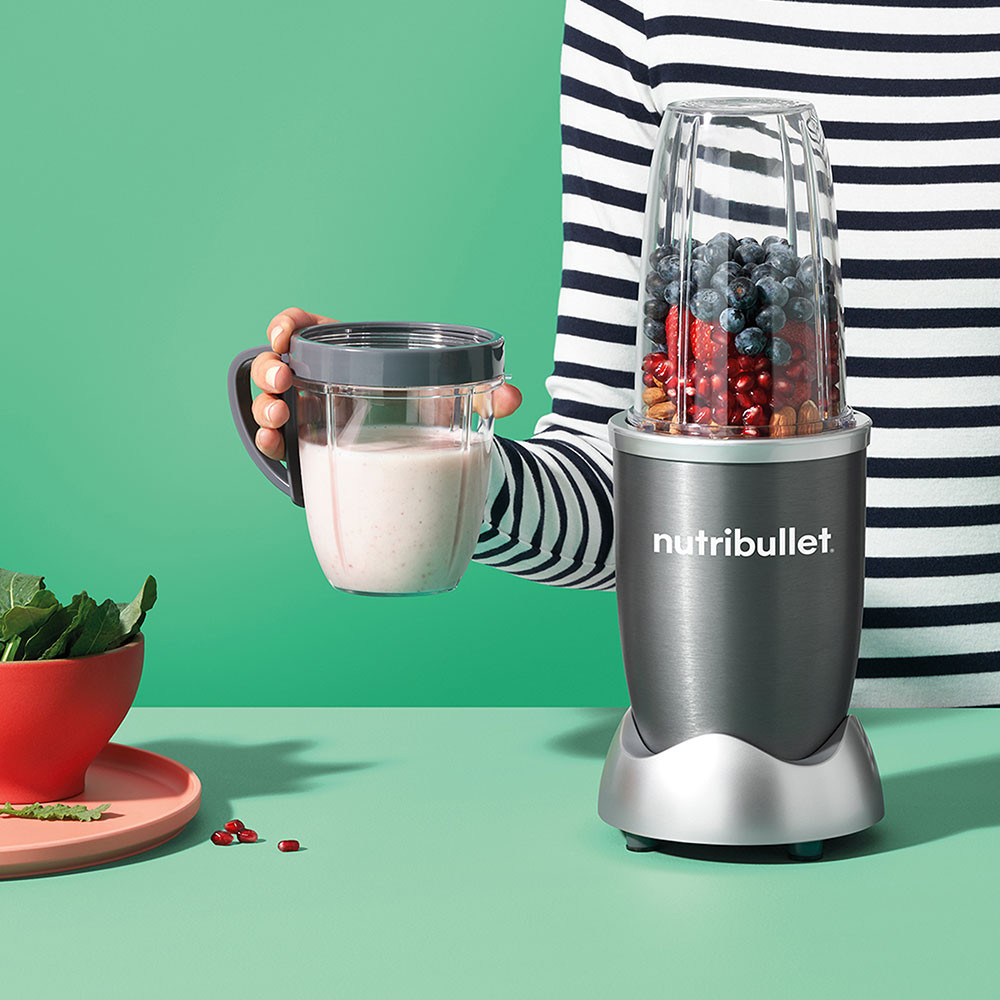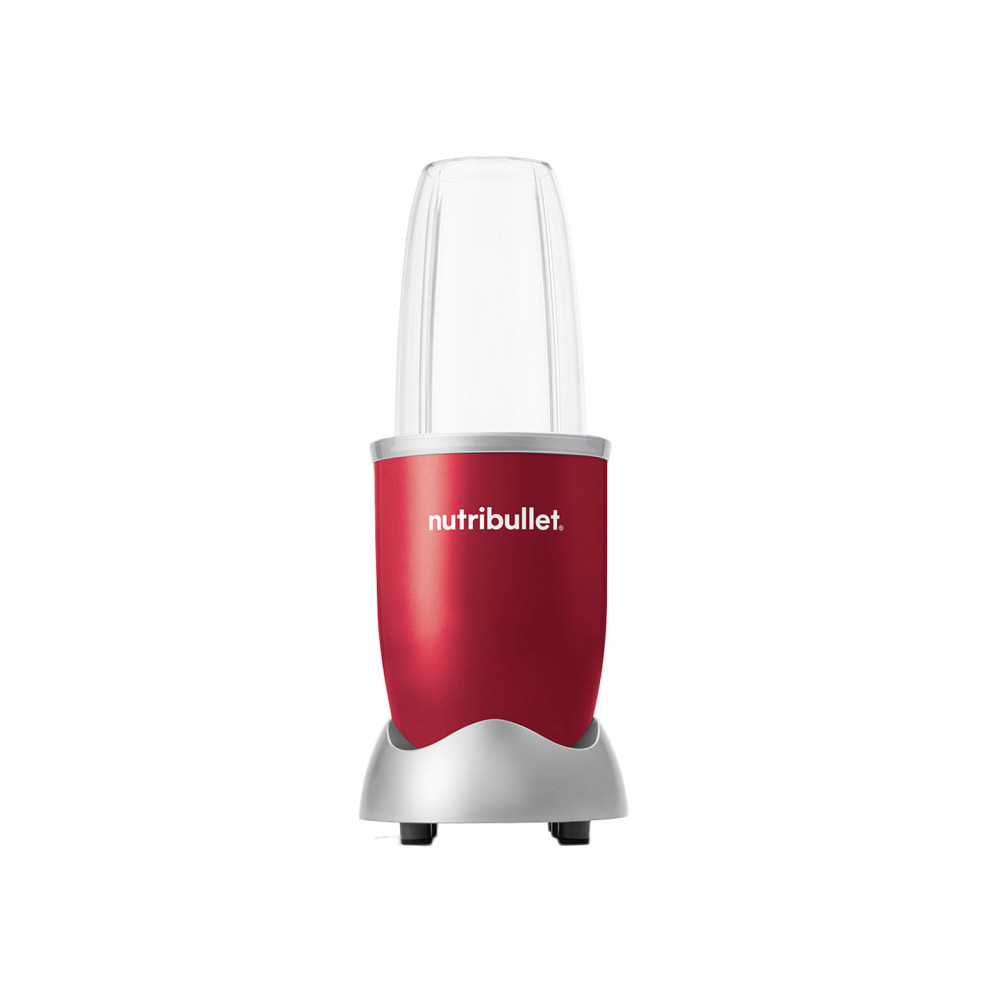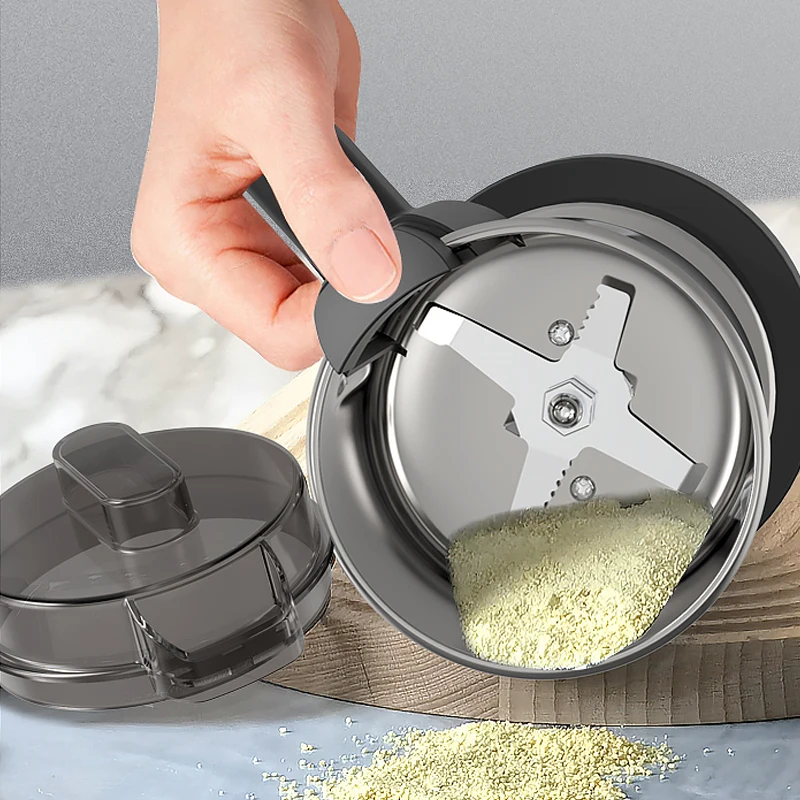Is Grinding Coffee Beans in a NutriBullet Possible?
The idea of using a NutriBullet coffee grinder to grind coffee beans may sound unusual, yet it’s not entirely far-fetched. Known for its power to blend smoothie ingredients into silky liquids, the NutriBullet’s sharp blades seem capable of grinding coffee beans. However, grinding beans for coffee is more than just pulverizing them into smaller pieces. The process requires a particular grind size and consistency to match your brewing method. Whether a NutriBullet can achieve the right grind consistency for a satisfying cup of coffee is a matter worth exploring.
In theory, the NutriBullet’s blade mechanism could chop up coffee beans, but there are crucial factors to consider. For one, achieving an even grind, crucial for flavor extraction, is challenging. Grind size needs to be consistent for the best results. A NutriBullet may offer the power, but lacks the precision of a dedicated coffee grinder. Also, the mechanical action of grinding generates heat, which can adversely affect coffee’s flavor by causing aromatic oils to evaporate. This risk is particularly relevant with high-speed blenders like the NutriBullet.
Although possible, grinding coffee beans in a NutriBullet might involve trade-offs in terms of grind quality. Therefore, it’s essential to weigh the convenience against the potential impact on your coffee’s taste and quality. A dedicated coffee grinder, designed to produce the perfect grind size without excess heat, might be a better investment for coffee enthusiasts. Yet, for those looking to experiment or seeking a multi-functional kitchen appliance, the NutriBullet offers an alternative method to explore.

The Importance of Grind Size and Consistency
Grind size and consistency are vital for a great cup of coffee. The size of the coffee grounds affects how water flows through and extracts flavors. A consistent grind ensures balanced brewing, key for expert taste. Every brewing method needs a different grind. For instance, espressos need fine grounds, while French presses require coarser ones.
When the grind is uneven, problems arise. Bitterness or lack of flavor can happen due to over or under-extraction. This is why uniform grind size matters. The NutriBullet may pose challenges here. It’s strong but may not achieve the uniformity a coffee grinder can. For lovers of rich, aromatic coffee, this is a crucial point. Ensuring grind size matches brewing needs is a must.
For the best-quality drink, we set our sights on the grind. If it’s off, so is the taste. So, while a NutriBullet can chop beans, it might not hit the mark on size and uniformity. True coffee aficionados will notice the difference. Thus, they often prefer a tool made just for coffee. The goal is a satisfying brew, with flavors fully unlocked, sip after sip.
Heat Generation: The Downside of Using a NutriBullet
Grinding coffee beans requires care to avoid heating them too much. Heat can spoil the delicate flavors. While NutriBullets are powerful, they might heat the beans while grinding. This could result in a less flavorful coffee.
When you use a NutriBullet, its blades spin fast, creating friction. This friction generates heat. If the beans get too hot, their aromatic oils could evaporate. These oils are essential for coffee’s rich taste. Losing them means your coffee could taste flat.
A coffee grinder, on the other hand, grinds beans with less heat. This protects the coffee’s flavor and aroma. For coffee lovers, this is crucial. They prioritize the taste of their brew.
Yet, not everyone has a coffee grinder. A NutriBullet can serve as a backup option. If you must use it, try to grind in short bursts. This may reduce heat buildup. Still, it’s not an ideal solution for grinding coffee beans.
For the best flavor, consider investing in a coffee grinder. If that’s not possible, be mindful of the heat when using a NutriBullet. It’s about finding the right balance for a good cup of coffee.

Dedicated Coffee Grinders Vs. NutriBullet: A Comparison
Choosing between nutribullet coffee grinder and a dedicated coffee grinder depends on your coffee preferences. Let’s compare their features to help you make an informed decision.
Consistency and Precision
Dedicated coffee grinders are known for their precise grind sizes. They give you a consistent grind, which is crucial for great coffee. NutriBullet blenders can grind coffee, but might not be as consistent.
Heat and Flavor Preservation
A dedicated grinder controls the heat better during grinding. This preserves coffee flavors. NutriBullet may generate more heat, possibly altering the coffee’s taste.
Cost and Convenience
NutriBullet blenders are often more affordable and versatile. They serve multiple kitchen needs beyond coffee grinding. But, a dedicated grinder, while potentially more costly, focuses on delivering the best coffee grind.
Grind Settings
Most dedicated grinders have various settings for the grind size. They cater to different brewing methods. The NutriBullet has no such precision control, which can limit your brewing options.
Longevity and Design
Coffee grinders are designed specifically for coffee beans. They are built for long-lasting performance in this area. NutriBullet is robust for general blending but may wear down faster if used regularly for coffee beans.
Final Brew Quality
With a dedicated coffee grinder, your final cup is likely to taste better. It’s all about how well the water extracts flavors from the grounds. Properly ground beans from a dedicated grinder enhance this process.
In summary, if you’re serious about coffee, a dedicated grinder is the better choice. It offers precision, consistency, and flavor preservation. However, if you need a more affordable, multipurpose device, the NutriBullet is an alternative. Just be aware of its limitations when it comes to grinding coffee.

Manual Alternatives for Grinding Coffee Beans
Turning coffee beans into grounds without a grinder is doable. There are several manual methods that can help you grind coffee beans when a dedicated grinder is not available. Exploring these alternatives can be a fun experiment and might give you a new appreciation for the grinding process. Below are some manual methods you can use to grind your coffee beans.
Use a Mortar and Pestle
Mortar and pestle have been around for ages. It’s a simple way to crush coffee beans and you can control the grind size by grinding more or less. Essentially, you crush the beans down until you reach the coarseness needed for your brew.
Roll with a Rolling Pin
Lay beans on a flat surface, cover with parchment paper, and use a rolling pin. Roll and crush the beans until you achieve the desired consistency.
Apply a Hammer
Using a hammer can be effective too. Place beans in a durable plastic bag and gently hammer them. Be mindful not to pulverize them unless a very fine grind is needed.
Smash with a Skillet
A heavy skillet can double as a grinder. Press down and crush the beans placed on a hard surface. Work in small batches for even results.
Crush with a Garlic Press
For a very coarse grind, try a garlic press. Just place a few beans in the press and squeeze them through.
Go for Hand Grinders
Lastly, if you’re grinding coffee often, consider investing in a hand grinder. It offers more precision and is portable, making it great for travel.
Each alternative has its quirks, and it might take a few tries to get it right. Adjust the force you apply based on the texture you’re going for. Remember, the goal is to extract the best flavor when brewed, so experiment to find what works best for your taste preference.
Step-by-Step Guide: Using NutriBullet for Coffee Grinding
Using your NutriBullet to grind coffee beans is straightforward. Follow this step-by-step guide for a quick and basic home grinding solution. However, remember that precision and consistency in grind size may not match that of a dedicated coffee grinder.
- Measure Your Beans: Start by measuring the coffee beans. Use about a quarter cup for a coarse grind.
- Prepare Your NutriBullet: Ensure your NutriBullet is clean and dry. Any moisture can affect the grind.
- Pulse, Don’t Blend: Pulse the beans in short bursts, checking regularly. This helps prevent heat buildup.
- Check the Grind: Open the NutriBullet and check the grind size. Aim for consistency in your grind.
- Shake It Up: Between pulses, give the NutriBullet a gentle shake. This helps distribute the beans for an even grind.
- Don’t Overfill: Avoid filling the NutriBullet too much. Overfilling can lead to inconsistent grinds.
- Repeat if Needed: If the grind isn’t fine enough, repeat the pulsing and shaking.
Remember, while a NutriBullet can grind coffee in a pinch, a dedicated coffee grinder is better for regular use. If you enjoy your coffee, investing in a coffee grinder may be worth considering for the best flavor and consistency.
Maintaining Your NutriBullet for Coffee Grinding
To keep your NutriBullet in top shape for grinding coffee, follow these tips:
- Clean After Each Use: After grinding coffee, clean the NutriBullet immediately. Coffee oils can build up and affect the flavor of your drinks. Wash the blade and cup with warm, soapy water and dry them before storing.
- Regular Blade Checks: Inspect the blades often for signs of dulling or damage. Sharp blades ensure a better grind. If you spot any issues, it’s time to replace them.
- Tighten Loose Parts: Ensure parts are secure before use. A loose blade or cup can cause uneven grinds. Tighten them by hand to avoid this problem.
- Avoid Overheating: Pulsing causes less heat than constant blending. If your NutriBullet feels warm, give it a break to cool down. This prevents heat from spoiling your coffee’s taste.
- Use Fresh Beans: Stale beans can make your coffee taste flat. For the best flavor, use fresh beans each time. They also grind better than older, drier beans.
By caring for your NutriBullet, you’ll keep it ready for not just smoothies, but coffee grinding too. Remember, though, it’s a workaround and not the ideal method. A dedicated coffee grinder is still best for regular coffee drinkers.
Tips for Achieving the Best Grind with a NutriBullet
Getting the right coffee grind with a NutriBullet can be tricky. Here are some tips to help you achieve the best possible grind.
Start with Small Batches
Grind coffee beans in small amounts. This ensures even grinding and prevents overworking the NutriBullet.
Use the Pulse Feature
Make use of the pulse function. It offers better control, reduces heat and helps in achieving a consistent grind.
Shake Regularly
Shake the NutriBullet between pulses. This helps move the beans for an even grind.
Monitor the Grind Closely
Watch the grind size carefully. Stop when you reach the desired consistency. Avoid grinding too finely unless aiming for espresso.
Cool Down Periods
Allow your NutriBullet to cool down if needed. This prevents heat from affecting the flavor of the coffee.
Clean After Use
Always clean your NutriBullet after grinding coffee. This stops old coffee flavors from mixing into your next grind.
By following these simple steps, you can get a better grind for your coffee using a NutriBullet. However, if you regularly grind coffee, consider a dedicated coffee grinder for optimal results. It offers precision and maintains coffee quality, two key components for a delicious brew.
